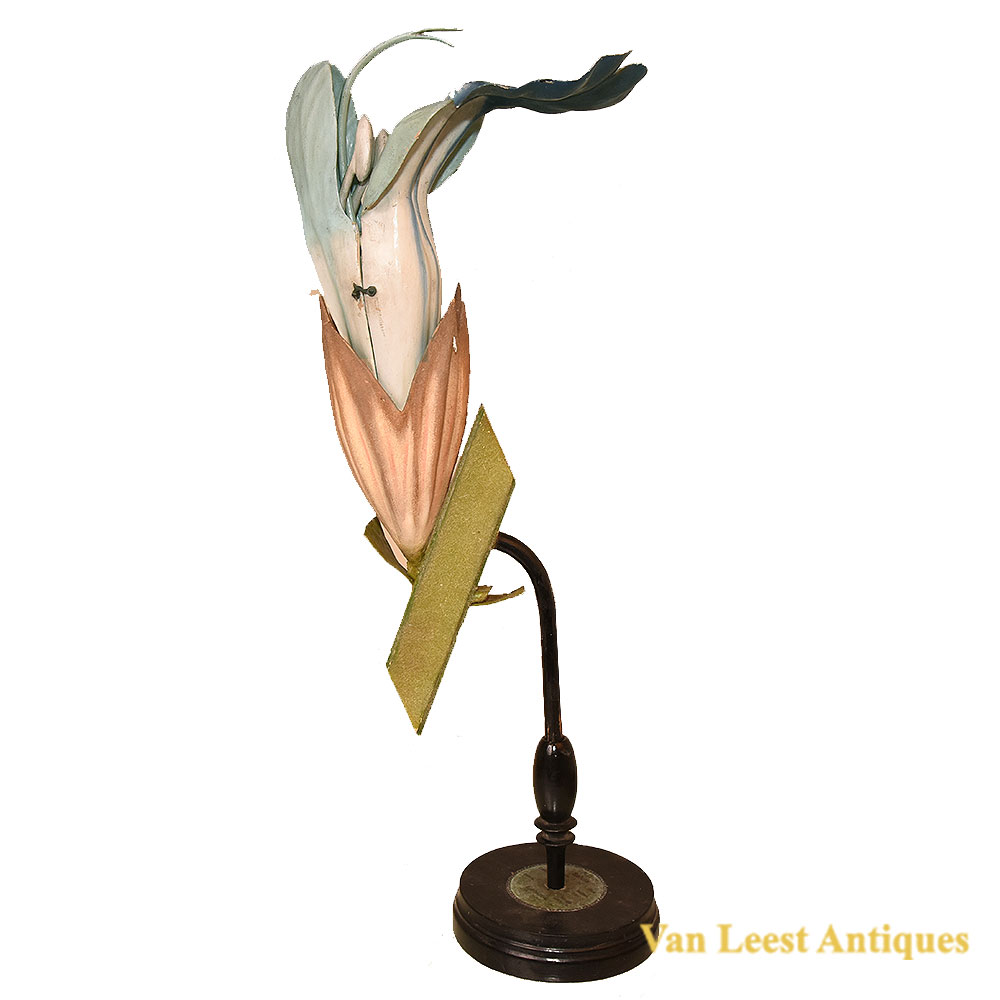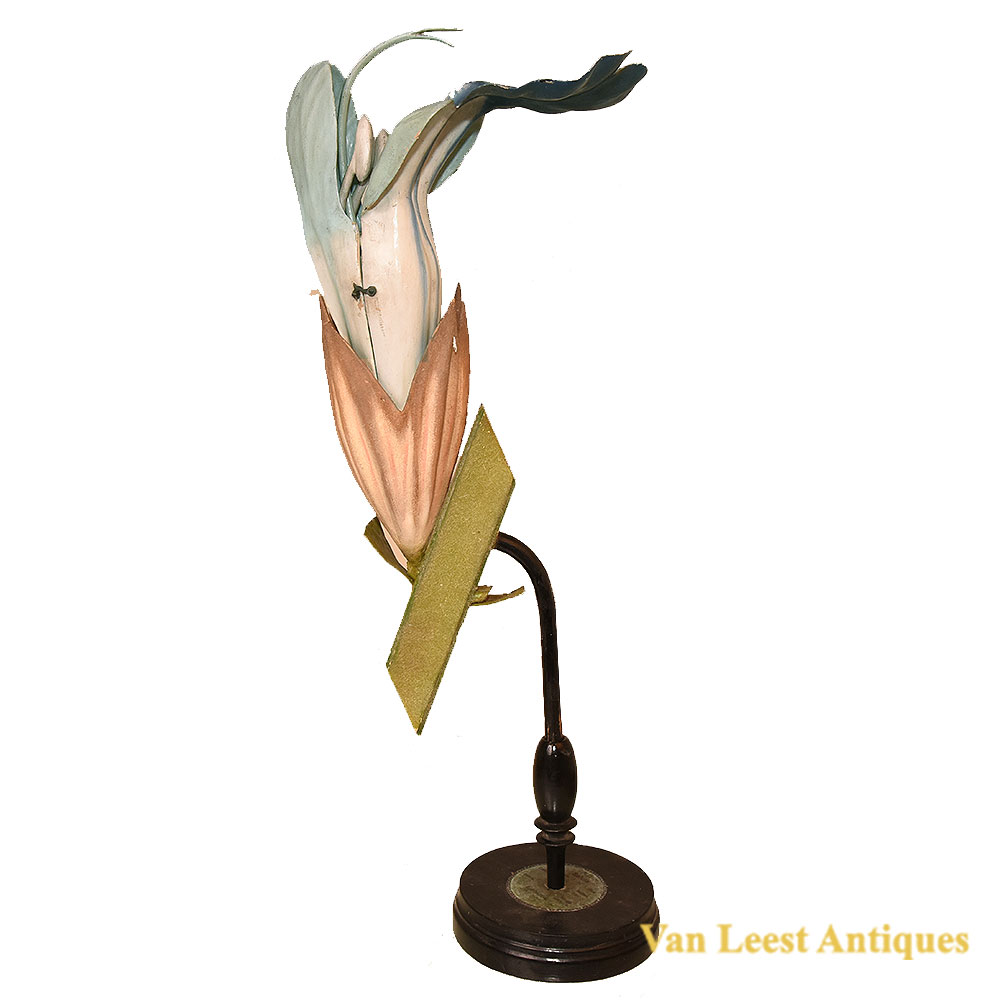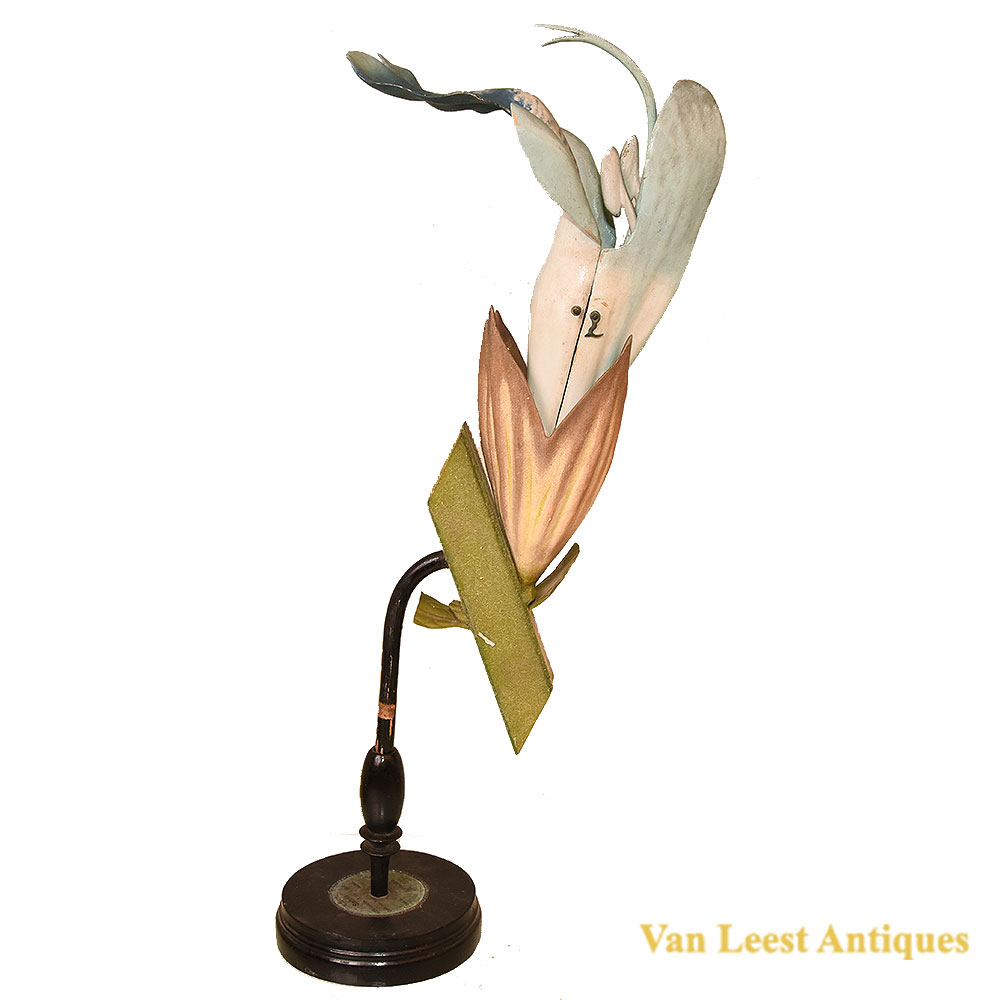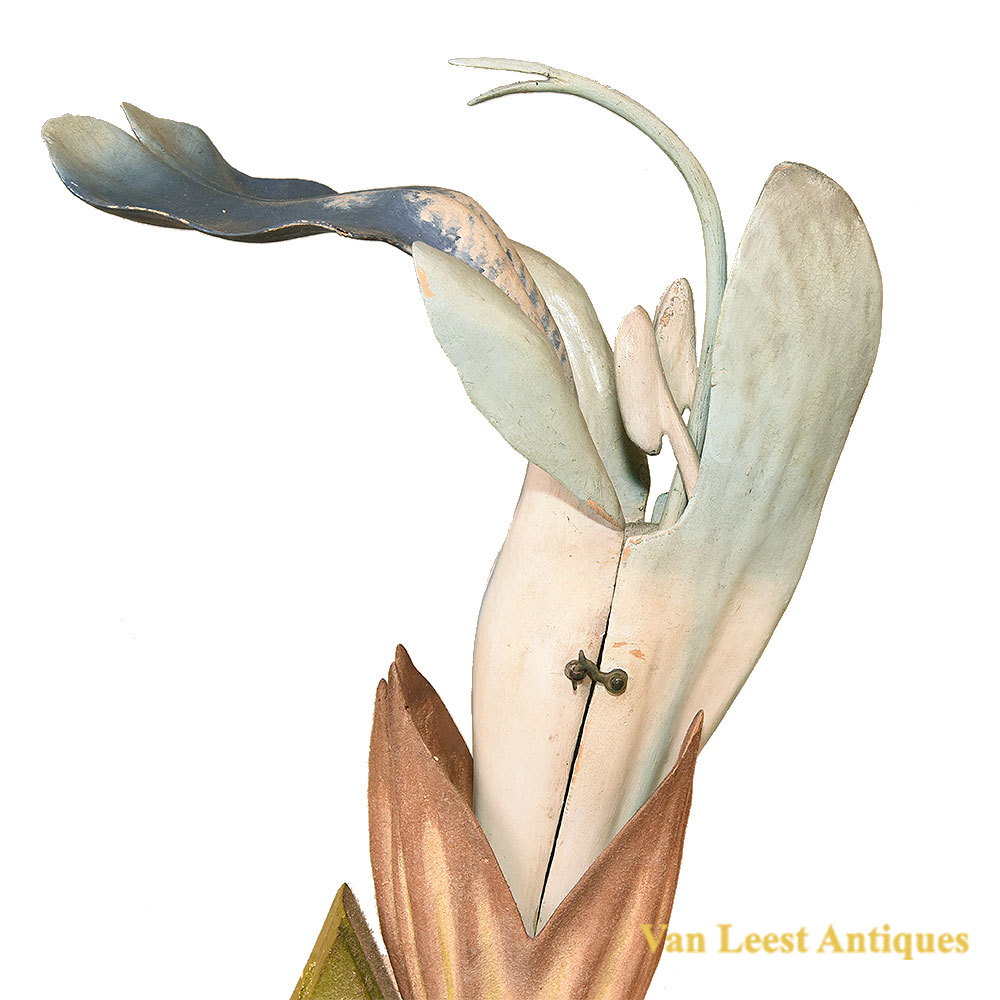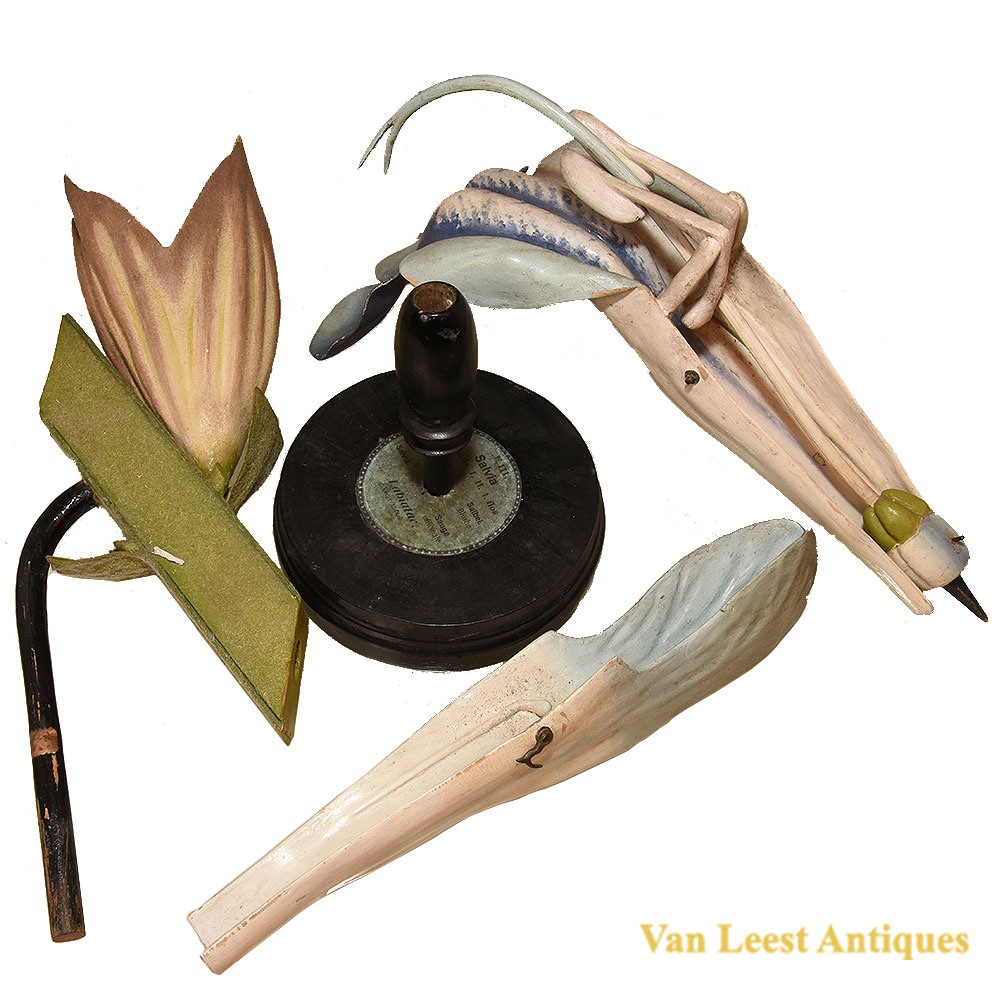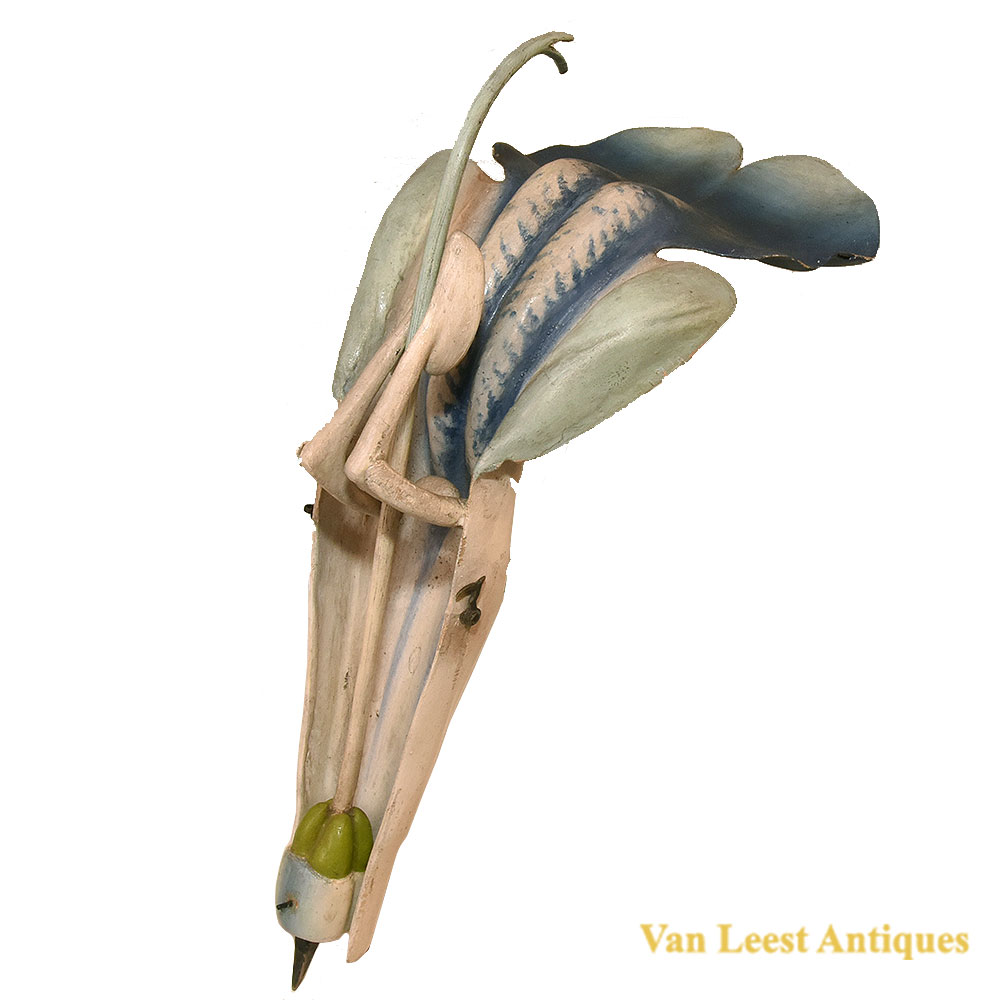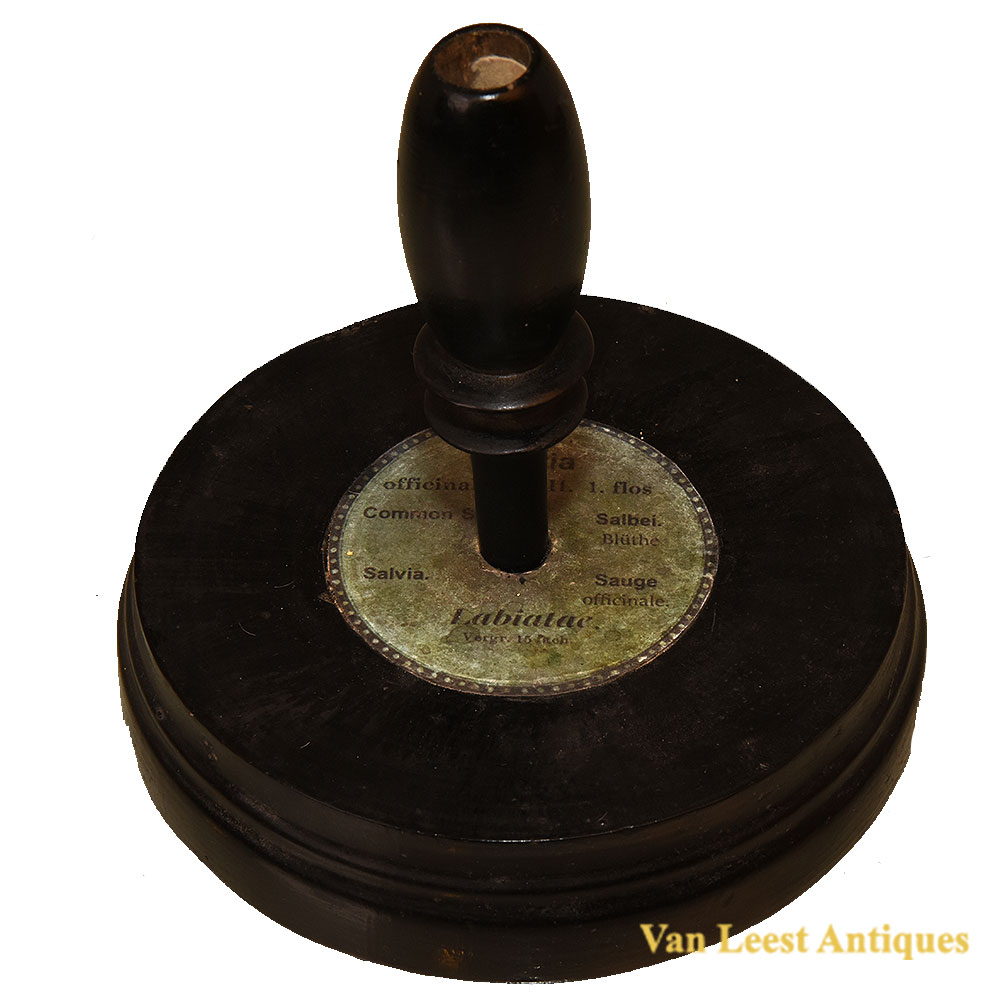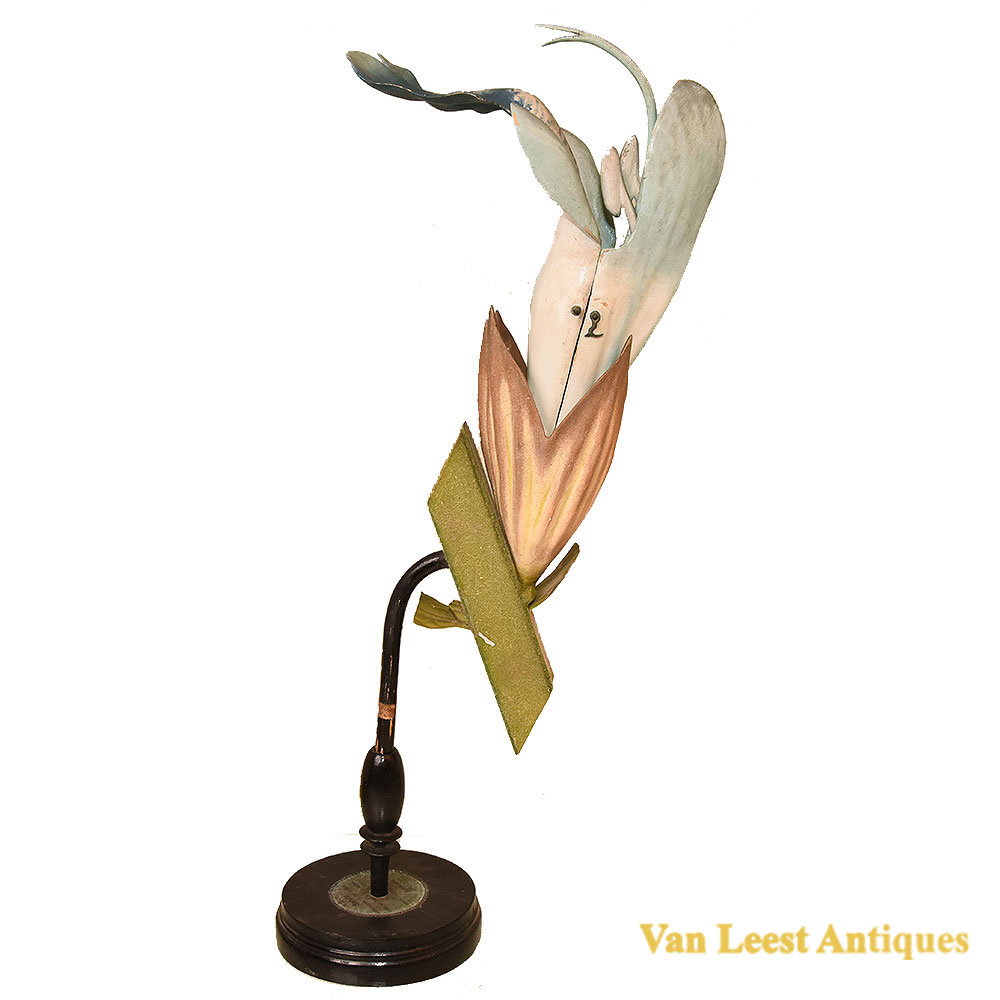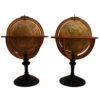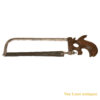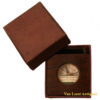Description
The Salvia flower model consists of five handpainted papier mache removable parts which are 15 times enlarged. The pistil can be secured with a pin in the petal and between the stamens. The flower tissues are hold together by hooks. The reproductive organs together are placed in the flowerbase. A wooden stem leads to the ebonized decorated base, which has blue sticker. The sticker is marked: ‘No. 111 Salvia Officinalis. L. II 1. flos Commn Sage Salbei. Blüthe Salvia Sauge officinale. Labiatac Vergr. 15 fach.’
About Brendel models
The dismountable flower models for education were originally developed by the Breslau professor Julius Cohn (1828-1898). They were initially produced by C. Lohmeyer and were already exhibited in Amsterdam at the botanical congress in 1865. In 1866, Robert Brendel (ca. 1821-1898) from Breslau took over the production. He was succeeded by his son Reinhold Brendel (ca. 1861-1927). In 1896, the company moved to Berlin, and from 1902 to the nearby Grünewald, where it was known as ‘Verlagsanstalt für Lehrmittel’. Around 1922, the company was located in Neumarkt in Silesia. In 1866, there were thirty models to choose from, and by 1913, there were nearly 300. They mainly consist of flower models of higher plant species, allowing for a detailed study of their reproductive organs, as they were key for the classification of plants according to Linnaeus’ systematics. The models were developed in consultation with professors including Julius Cohn, Eduard Eidam, Alexander Tschirch, Leopold Kny, Carl Müller, Emerich Ratháy, Lajos Jurányi, and G. Höstermann. They are made of various materials, such as papier-mâché, wood, metal wire, and glass beads.
Look for shop information on www.vanleestantiques.com
Ask the Dealer
Dealer information
 Van Leest Antiques
Van Leest Antiques
Van Leest Antiques
Van Leest Antiques, based in Utrecht in the Netherlands, specialises in antique scientific and medical instruments. Their collection covers mainly scientific and medical antique instruments: barometers, globes and planataria, nautical instruments, anatomical models, and pharmacy items. Toon Van Leest travels regularly in Europe and visits trade fairs, auctions, and antique dealers to collect stock and to find pieces to fulfil his clients' unusual requests.
As well as being an avid antique collector and dealer, Toon Van Leest is also a dentist. He believes that antiques are a stable investment, not reliant on trends or fashion, and have truly lasting value. Above all, he says, antiques are timeless and never lose their beauty.




